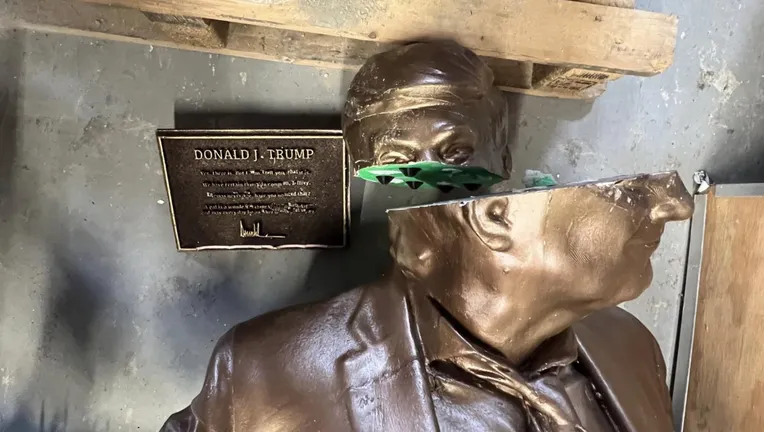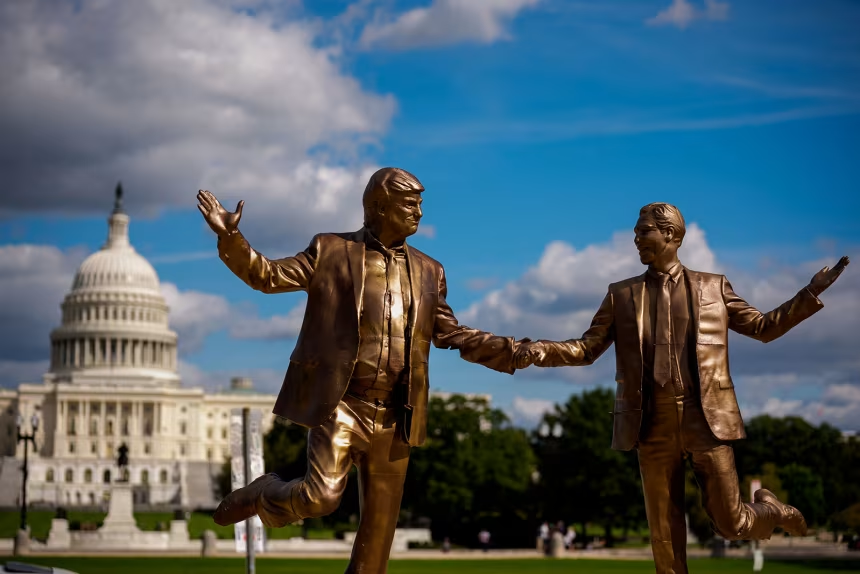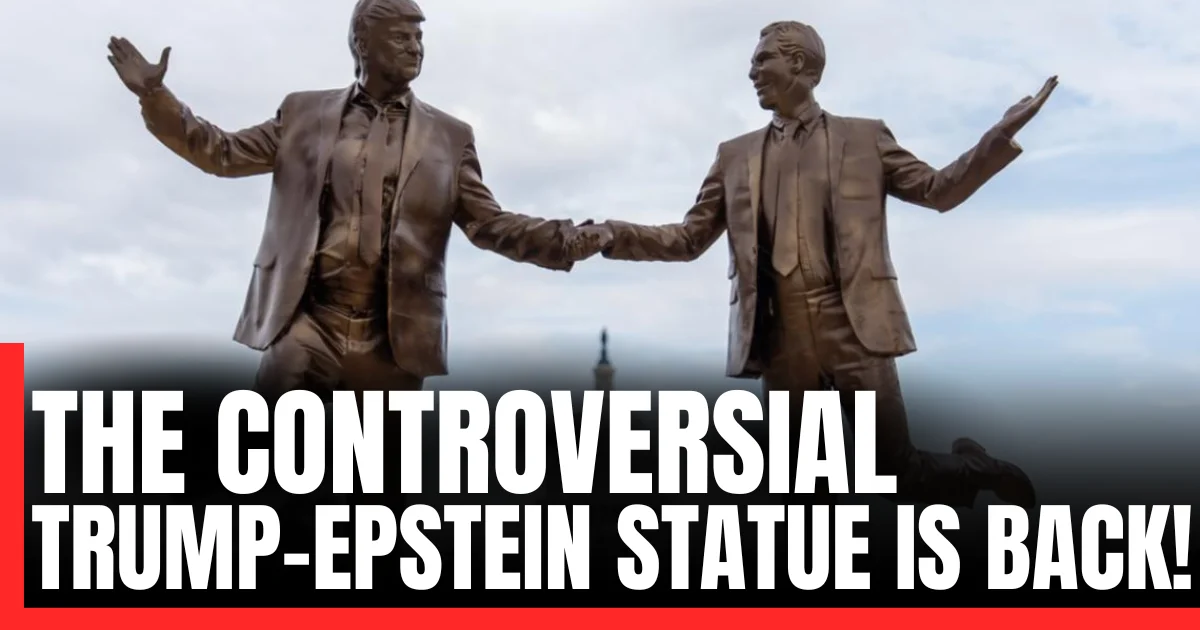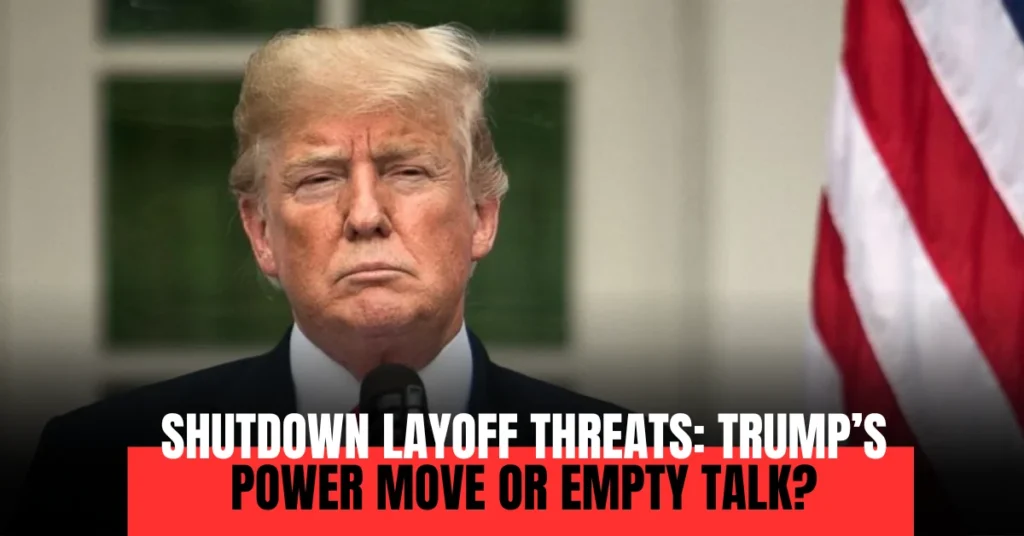The Trump-Epstein statue is back on the National Mall after NPS removal. Discover the story, controversy, and the activist group behind it.
Table of Contents
Trump-Epstein Statue Returns to National Mall After NPS Removal
Introduction
A provocative statue depicting former President Donald Trump and financier Jeffrey Epstein has returned to the National Mall, just days after being dismantled by the National Park Service (NPS). Titled “Best Friends Forever,” the piece has reignited debates over protest art, free expression, and government oversight of public installations.
The Artwork and Its Message

The statue shows Trump and Epstein holding hands with exaggerated smiles, each with one foot kicked back in a playful pose. A plaque beneath them reads:
“In Honor of Friendship Month — We celebrate the long-lasting bond between President Donald J. Trump and his ‘closest friend,’ Jeffrey Epstein.”
Although Trump has repeatedly denied being close to Epstein, the artwork directly challenges that claim.
Removal and Reinstallation by “The Secret Handshake”
Last week, NPS officials removed the statue, citing permit violations. The piece was dismantled and sustained visible damage during the process.
- Reason for removal: Non-compliance with permit terms
- Damage: Scratches and broken parts from dismantling
- Public response: Renewed conversations on artistic freedom
Despite this, the activist art group “The Secret Handshake” restored and reinstalled the statue on September 30, ahead of the federal government shutdown. The group confirmed that the permit had been approved before the closure and argued that shutdowns should not affect approved installations.

The Secret Handshake’s History of Political Art
This isn’t the first time the group has stirred headlines with provocative pieces:
- “The Resolute Desk” (2024): A replica of Nancy Pelosi’s desk topped with a large poop emoji, referencing the January 6 Capitol riot.
- “The Donald J. Trump Enduring Flame”: A bronze tiki torch mocking Trump’s comments after the Charlottesville rally in 2017.
- “Dictator Approved”: A golden hand crushing the Statue of Liberty’s crown, symbolizing threats to democracy.
Through satire, the group consistently highlights political controversies, sparking viral attention across media and social platforms.
Why the Statue Matters
The Trump-Epstein statue raises important questions about:
- Freedom of Expression: Should activist art be unrestricted in public spaces?
- Government Oversight: How much control should agencies like NPS have over protest art?
- Public Perception: Do such installations influence how people view political leaders?
For some, the statue is a necessary critique of political figures; for others, it’s an inappropriate display on a national landmark.
FAQs About the Trump-Epstein Statue
Q1: Who created the Trump-Epstein statue?
The activist group The Secret Handshake designed and installed the artwork.
Q2: Why did NPS remove the statue initially?
It was removed due to violations of its installation permit.
Q3: What does the statue symbolize?
It satirically portrays Trump’s alleged ties to Epstein, raising debates about accountability and political satire.
Q4: Has The Secret Handshake created other controversial art?
Yes, including works like The Resolute Desk and Dictator Approved, both of which went viral.
Q5: Is the statue a permanent installation?
No. It remains subject to permit approval and government oversight.
Conclusion
The reappearance of the Trump-Epstein statue on the National Mall underscores the growing role of activist art in political discourse. While some see it as a bold expression of free speech, others argue it disrespects public spaces. What remains clear is that groups like The Secret Handshake are pushing boundaries — ensuring that satire and politics remain at the forefront of cultural debates.
👉 Do you think protest art like this belongs on national landmarks, or should stricter limits apply? Share your views in the comments below.

